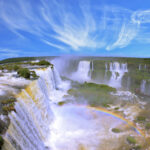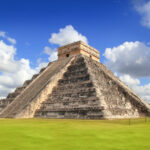The Messel Pit Fossil Site, located near Darmstadt, Germany, is a UNESCO World Heritage site known for its rich deposits of fossils from the Eocene period, some 47 million years ago. The site is particularly famous for its well-preserved fossils of primates, including early human ancestors, as well as many other types of animals and plants.
It is famous for its rich deposits of fossils from the Eocene period, some 47 million years ago. The site is particularly well-known for its well-preserved fossils of primates, including early human ancestors, as well as many other types of animals and plants. The site is also known for its exceptional preservation of soft tissues, such as skin, hair, and internal organs. This, along with the diversity of fossils found, makes Messel Pit a unique and valuable site for the study of evolutionary history and the paleoecology of the Eocene period.
Contents
Things to See and Do
When visiting the Messel Pit Fossil Site, there are a few things to see and do that will give you a unique and fascinating experience:
- Guided tours: The site is only accessible by guided tour, which typically lasts about an hour and a half. These tours give you an overview of the site and the history of the fossils found there.
- Messel Fossil Museum: The adjacent Messel Fossil Museum houses many of the fossils found at the site. Visitors can see the fossils up close and learn more about the animals and plants that lived during the Eocene period.
- Hike around the pit: Visitors can take a hike around the pit, which is an open-air pit that gives a unique perspective of the site.
- Photography: Photography is allowed, but flash photography is not permitted. Visitors can take pictures of the site and the fossils in the museum.
- Relax and picnic: The site is quite remote, so it’s a good idea to bring along a picnic lunch and take a break while enjoying the nature around.
- Learn about the geology and paleontology: Visitors can learn about the geology of the area, the formation of the Messel Pit Fossil Site and the paleontology of the Eocene period.
- Audio guide: Audio guides in English are available for visitors who do not speak German.
By taking advantage of these things to see and do, visitors can have a unique and educational experience while visiting the Messel Pit Fossil Site.
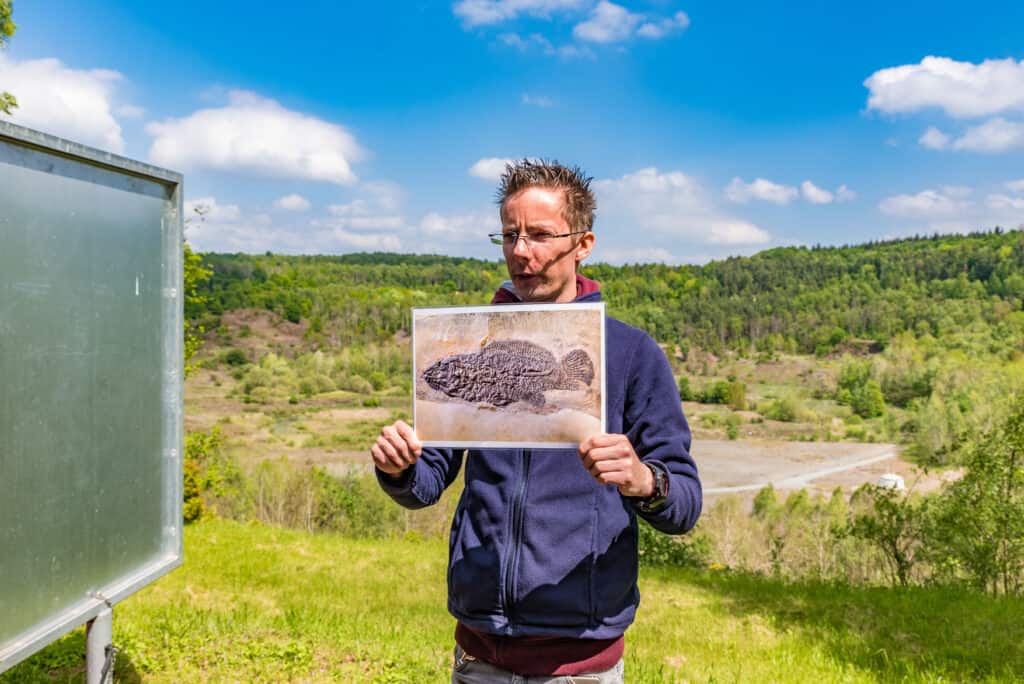 Takashi Images / Shutterstock.com
Takashi Images / Shutterstock.comFossils at the Messel Pit Fossil Site
The Messel Pit Fossil Site contains many fossils of animals that lived during the Eocene, including Mammals, Birds, Fish, Amphibians, Reptiles and Insects.
Mammals
The Messel Pit Fossil Site is particularly famous for its well-preserved fossils of mammals from the Eocene period. The diverse range of mammal fossils found at the site provides valuable insights into the evolution of mammals and the environment in which they lived.
Primates: The site is particularly famous for its well-preserved fossils of primates, including early human ancestors. These fossils provide an important glimpse into the early evolution of primates and the development of key characteristics such as grasping hands and binocular vision.
Horses: Fossils of horses have been found at the site, providing insights into the evolution of these mammals. The horse fossils found at Messel are among the oldest known in the world.
Tapirs: Tapirs are a group of mammals that are related to horses and rhinoceroses, and fossils of these animals have been found at the site. These fossils provide important information about the evolution of tapirs and their place in the Eocene ecosystem.
Bats: The site also contains many well-preserved fossils of bats, providing insights into the early evolution of these mammals.
Rodents: Fossils of rodents such as rats and mice have also been found at the site.
Other mammals: A wide range of other mammals have also been found at the site, including elephants, deer, beavers, and many others.
The Messel Fossil Museum exhibits many of the mammal fossils found at the site and provides more information about the animals and the environment in which they lived. Visitors can also learn about the geology of the area and the formation of the Messel Pit Fossil Site.
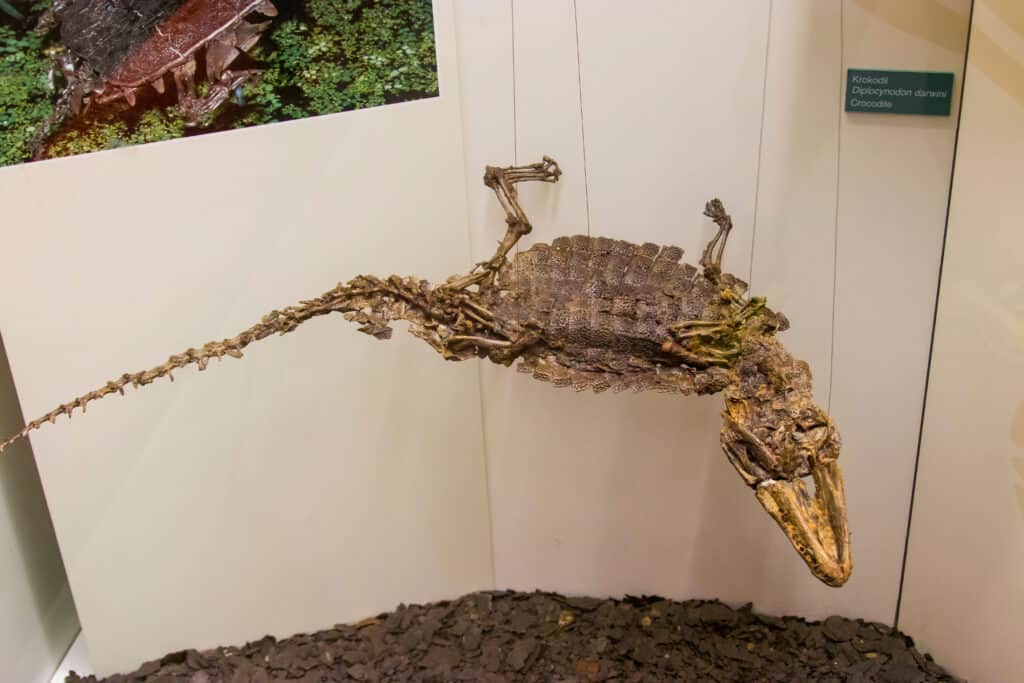 Danny Ye / Shutterstock.com
Danny Ye / Shutterstock.comBirds
The diverse range of bird fossils found at the site provides valuable insights into the evolution of birds and the environment in which they lived.
Songbirds: The site contains some of the earliest known fossils of songbirds, providing important insights into the evolution of these birds and their place in the Eocene ecosystem.
Water birds: Fossils of water birds such as ducks, geese, and swans have also been found at the site, providing information about the diversity of birds in the Eocene.
Flightless birds: Fossils of flightless birds such as ostrich-like birds have also been found at the site, providing important information about the evolution of flightless birds.
Birds of prey: Fossils of birds of prey such as eagles and hawks have also been found at the site, providing insights into the evolution of these birds and their place in the Eocene ecosystem.
Other birds: A wide range of other birds, including parrots, pigeons, and many others, have also been found at the site.
The bird fossils found at the site provides a glimpse into the evolution of birds and their diverse adaptation to different habitats and niche during the Eocene.

Fish
The Messel Pit Fossil Site’s rich collection of fish fossils offers a valuable understanding on the development of fish species and the freshwater ecosystem they were a part of during the Eocene period. Some of the most notable fish fossils found at the site include:
Lungfish: The site contains many well-preserved fossils of lungfish, a group of fish that have both gills and lungs. These fossils provide important information about the evolution of lungfish and their place in the Eocene freshwater ecosystem.
Coelacanths: Coelacanths are a group of ancient fish that have been found at the site. These fossils provide important information about the evolution of coelacanths and their place in the Eocene ecosystem.
A wide range of other fish including ray-finned fish, and many others have also been found at the site.
Amphibians
A multifaceted range of amphibian fossils can be found at the site, which provides valuable insights into the evolution of amphibians and the freshwater environment in which they lived.
Frogs: The site contains many well-preserved fossils of frogs, providing important information about the evolution of frogs and their place in the Eocene freshwater ecosystem.
Salamanders: Salamanders are a group of amphibians that have been found at the site. These fossils provide important information about the evolution of salamanders and their place in the Eocene ecosystem.
The Messel Fossil Museum exhibits many of the amphibian fossils found at the site and provides more information about the amphibians and the freshwater environment in which they lived.
The amphibian fossils found at the Messel Pit Fossil Site offer a cursory glance into the variety of amphibian species that lived in freshwater environments during the Eocene period and provide insights into how these species adapted to changing conditions and their roles within the ecosystem.
Reptiles
The diverse range of reptile fossils found at the site provides valuable insights into the evolution of reptiles and the environment in which they lived.
Turtles: The site contains many well-preserved fossils of turtles, providing important information about the evolution of turtles and their place in the Eocene ecosystem.
Snakes: Snake fossils have also been found at the site, providing information about the diversity of snakes in the Eocene.
Lizards: Fossils of lizards have also been found at the site, providing insights into the evolution of lizards and their place in the Eocene ecosystem.
Crocodilians: Fossils of crocodilians have also been found at the site, providing information about the diversity of crocodilians in the Eocene.
The Messel Fossil Museum exhibits many of the reptile fossils found at the site and provides more information about the reptiles and the environment in which they lived. Visitors can also learn about the geology of the area and the formation of the Messel Pit Fossil Site. The reptile fossils found at the site provide a glimpse into the diversity of reptiles that lived during the Eocene period and the adaptation they developed to survive in different environments.
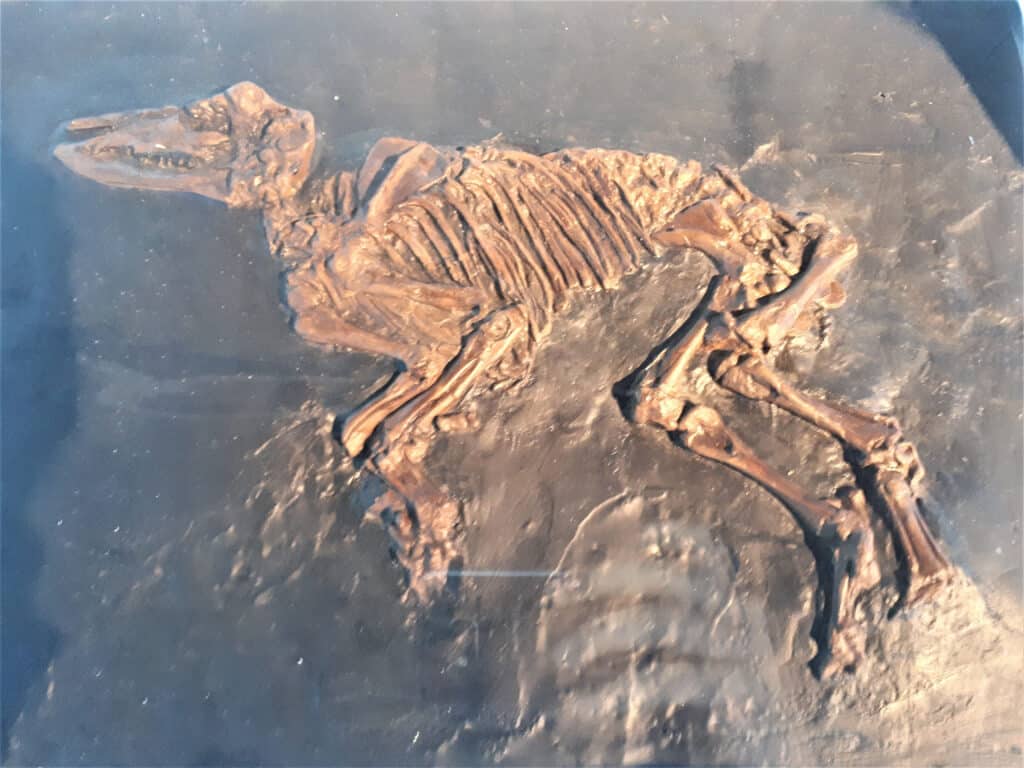
Insects
The Messel Pit Fossil Site is also known for its well-preserved fossils of insects from the Eocene period. Some of the most notable insect fossils found at the site include:
Beetles: The site contains many well-preserved fossils of beetles, providing important information about the evolution of beetles and their place in the Eocene ecosystem. Beetles are the most diverse group of insects and also the most diverse group of animals on the planet.
Flies: Fossils of flies have also been found at the site, providing information about the diversity of flies in the Eocene. Flies are important pollinators and also play a significant role in the food chain as predators or prey.
Wasps: Fossils of wasps have also been found at the site, providing insights into the evolution of wasps and their place in the Eocene ecosystem. Wasps are important predators of other insects and also play a role in pollination.
Bees: Fossils of bees have also been found at the site, providing information about the diversity of bees in the Eocene. Bees are important pollinators and also play a role in the food chain as predators or prey.
A wide range of other insects, including ants, termites, grasshoppers, and many others, have also been found at the site.
Own digging not allowed
The Messel Pit Fossil Site is now a protected area and it is not possible for visitors to dig in the pit themselves.
The fossils found at the site are considered to be of scientific and cultural significance and are protected by law.
The excavation and study of the fossils is carried out by trained paleontologists, who use special techniques to carefully remove the fossils from the rock and preserve them for scientific study.
Former Coal Mine
It was originally a coal mine that operated from 1875 to 1965. During this time, the mine produced around 12 million tons of coal, which was of a high quality with a low sulfur content. This made it suitable for use in power plants and other industrial applications.
The coal deposits at Messel were formed during the Eocene period, around 47 million years ago. The coal seams at Messel were relatively thin, which made it necessary to mine the coal using the open-pit method. This method involved removing the overlying layers of rock and soil to reach the coal seams. The excavation of the pit was carried out in several stages, with the mine gradually getting deeper as it expanded.
The coal mined at Messel was primarily used to fuel power plants and other industrial facilities in the surrounding area. The high-quality coal with low sulfur content was particularly well-suited for use in power plants, as it produced less pollution and ash compared to other types of coal. The mine was also a significant employer in the area, providing jobs for many people in the Darmstadt region.
However, as the demand for coal decreased and the mining operations at Messel became unprofitable, the mine was closed in 1965. This was also due to new laws and regulations that emerged in the 60s that aimed to protect the environment and the health of the population. The site was then abandoned and left to nature.
It wasn’t until the 1970s, when amateur paleontologists discovered the first fossils in the pit that the Messel Pit Fossil Site gained scientific and public attention. The site’s unique geology, which includes a layer of volcanic ash, provided the ideal conditions for the preservation of fossils. The ash layer, which covered the bottom of the lake that existed in the area at the time, helped to protect the remains of animals and plants that fell into the lake from being scavenged or decomposed. The ash also helped to preserve soft tissue, such as skin, hair, and internal organs, which is extremely rare in fossil finds.
Messel Fossil Museum
The museum was established in 1995, the same year that the Messel Pit Fossil Site was designated as a UNESCO World Heritage Site. It’s the main point of interest in the fossil site, showcasing the rich collection of fossils that have been found there, including those of primates, birds, fish, amphibians, reptiles, mammals, and insects.
The museum is dedicated to educating visitors about the history of the Messel Pit Fossil Site and the fossils that have been found there. It features a wide range of exhibits, including interactive displays, models, and reconstructed scenes, which provide a glimpse into the ancient environment and the life that existed there 47 million years ago. The museum also includes an extensive collection of fossils from the Eocene period, including those of primates, birds, fish, amphibians, reptiles, mammals, and insects.
One of the highlights of the museum is the reconstruction of the ancient environment of the Messel Pit, which provides visitors with an idea of what the area looked like during the Eocene period. The museum also features interactive exhibits that allow visitors to learn about the different animals and plants that existed during the Eocene period.
The Messel Fossil Museum also has a research center where scientists study the fossils found in the Messel Pit, and it’s open to the public. The museum offers guided tours and educational programs for visitors, including children. The Messel Fossil Museum is open to the public throughout the year and visitors can visit the site and the museum to learn more about the fossils and the history of the Messel
Typical Costs
The typical costs associated with visiting the Messel Pit Fossil Site and the Messel Fossil Museum can vary depending on a number of factors, such as the time of year and the type of visit. Generally speaking, the cost of visiting the site is relatively affordable, making it a great option for families and budget-conscious travelers.
Admission to the Messel Fossil Museum:
- Adult: €8
- Children and young adults (6-18): €4
- Groups of 10 or more: €6
- Family ticket (2 adults and up to 4 children): €18
The above prices are for the general admission and usually include access to all the exhibits and the guided tours (if available on the day of visit).
The cost of parking at the Messel Pit Fossil Site is €3 per car.
If you plan to visit the site and the museum multiple times, you can also purchase an annual pass, which grants you unlimited access to the Messel Fossil Museum and the Messel Pit Fossil Site for one year.
It’s also worth noting that there are discounts available for students and seniors, as well as for families with multiple children. Additionally, some guided tours and workshops may have additional fees.
It’s always recommended to check the official website of the Messel Fossil Museum or contact them directly for the most up-to-date information on admission fees and discounts.
Be Prepared, Buddy
Preparing for a visit to the Messel Pit Fossil Site and the Messel Fossil Museum is relatively straightforward, but there are a few things to keep in mind to make the most of your visit.
- Book in advance: The site is only accessible by guided tour, so it’s important to book your visit in advance to ensure you can get a spot on a tour.
- Language: The tours are held in German, but audio guides in English are available.
- Plan ahead: Before your visit, it’s a good idea to check the official website of the Messel Fossil Museum to see what exhibits and activities are currently available. Additionally, you should also check the schedule of guided tours, if available, and plan your visit accordingly.
- Dress for the weather: The Messel Pit Fossil Site is an open-air site, so be sure to dress appropriately for the weather, especially if you plan to take a guided tour of the pit. Wear comfortable shoes, a hat, and sunscreen if it’s sunny, and bring an umbrella or rain jacket if it’s forecast to rain.
- Bring water: The Messel Fossil Museum is indoors, but the Messel Pit Fossil Site is outdoors. If you plan to take a guided tour of the pit, bring water and snacks to keep you hydrated and energized.
- Bring a camera: The Messel Pit Fossil Site and the Messel Fossil Museum have many interesting exhibits and reconstructions, so bring a camera to capture the memories of your visit.
- Be respectful: The Messel Pit Fossil Site is a UNESCO World Heritage Site, and the fossils found there are of great scientific and cultural significance. Visitors are asked to respect the site and the fossils by not touching or disturbing them in any way.
- Check for discounts: As previously mentioned, there are discounts available for students, seniors and families, so be sure to check if you qualify for any discounts and bring the necessary identification.
- Respect the fossils: Remember that the fossils at the site are valuable scientific specimens and should be treated with respect and care.
By following these tips, you can make the most of your visit to the Messel Pit Fossil Site and have a memorable and educational experience.
How to get there
The Messel Pit Fossil Site is located near the city of Darmstadt in Germany and is easily accessible from several major German cities. Here’s how to get there from some of the most popular destinations:
| Destination | Distance (km) | Distance (mi) | By Car (h) | By Train (h) |
|---|---|---|---|---|
| Cologne | 230 | 143 | 2.5 | 2 |
| Berlin | 380 | 236 | 5.5 | 4 |
| Frankfurt | 40 | 25 | 0.5 | 0.3 |
| Hanover | 330 | 205 | 4.5 | 3.5 |
| Hamburg | 400 | 249 | 6.5 | 5 |
| Munich | 360 | 224 | 5.5 | 4 |
| Stuttgart | 130 | 81 | 1.75 | 1.5 |
Please note that the duration of travel may vary depending on traffic, route, and mode of transportation. It’s recommended to check the schedule and timetable in advance and plan your trip accordingly.











